by STEVEN KURUTZ
photos; Laure Joliet for The New York Times
LOS ANGELES — Twenty-seven years ago, Bob Breen and Clare Graham began living together in an Arts and Crafts bungalow in the Los Feliz neighborhood here, furnishing it by zealously shopping the flea markets and swap meets of Southern California for vintage décor. That same year, 1986, they also bought an old supermarket in a sketchy part of the city cut off by freeways.
The two events were not unrelated. Much of the couple’s life together in the years since can be traced to their inspired real estate gamble.
Six years earlier, Mr. Breen, who was then a set designer for sitcoms like “The Jeffersons,” had bought the 1913 bungalow. It had been owned by Erle Kenton, an early Hollywood director, and his wife, who kept it as if preserved in amber. A massive old avocado tree grew in the backyard, and the brick fireplace, French doors and whitewashed Douglas fir walls inside were all original.
Every weekend, Mr. Breen and Mr. Graham would drive to the Rose Bowl Flea Market and others in search of Pacific dishware, decorated Bauer pottery, Stickley furniture and other antiques.
Still, Mr. Graham, who for decades was an art director at Disneyland, kept his own apartment in Long Beach, Calif. It’s not that he resisted moving in with Mr. Breen; there wasn’t room.
“Clare had a lot of stuff,” said Mr. Breen, 62, referring to flea-market finds as well as the raw materials for the sculptural artworks that Mr. Graham, 64, makes out of bottle caps, Scrabble tiles and other castoff objects. “We needed to make some decisions about space.”
While looking for a studio for Mr. Graham, the couple came across a concrete building in Highland Park that was originally a Safeway and, later, a roller rink. The neighborhood was years away from gentrification, and the bunkerlike building needed updating. But it had 28-foot-high ceilings and vast floor space in which to work. Young and flush, they took the leap.
“There’s a theory that a goldfish will eat the amount of food to be the maximum size it can for the bowl,” Mr. Graham said. “Obviously, the scale changes the design dynamic terrifically. My art tends to span to this size.”
The building also freed the couple from storage concerns at home, so they could live together while scaling up the Breen-Graham collection. They had a van and 7,000 square feet of space; they could buy practically anything at flea markets that struck their fancy, no matter the size. And for years, they have.
Galen Lowe, an antiques dealer in Seattle who has become friends with the two and accompanied them on buying trips, recalled his first visit to MorYork Gallery, as the couple named the building, after the avenue (York) on which it stands.
“I’ve been to a lot of places and seen a lot of stuff,” Mr. Lowe said. “But that was a jaw-dropping moment.”
He added: “They’re interested in objects that show the passage of time, objects that show layers. Things never intended to be art. It’s a giant cabinet of curiosity.”
At first, a visitor to MorYork doesn’t know where to look. At the row of Indonesian teak display cases filled with Chinese pottery and curios? The tray of prosthetic eyeballs in another case? The collection of early-20th-century carnival knockdown dolls? The fuel tanks from a World War II-era plane that hang from the exposed-beam ceiling? The Dr Pepper vending machine the couple hauled back from the Rose Bowl, a rusted-out, bullet-holed, strangely gorgeous carcass of modern America?
Mixed among these oddities and antiques are Mr. Graham’s artworks: skyscrapers made out of Scrabble tiles; screens fashioned from vintage yardsticks and crushed soda cans; a wood-frame cabinet sheathed, to stunning effect, in precisely cut squares from paint-by-number paintings.
One morning last fall, Mr. Graham stood at his work bench there, listening to classical music on the radio and patiently threading thousands of aluminum pop tops through wires to form kelplike strands. He planned to turn the strands into pop-top furniture and pop-top mirror frames for a show at the Craft & Folk Art Museum here.
“I collect them in these big trash cans, and there are about 200,000 in a can like that,” Mr. Graham said, pointing to the plastic well from which he fishes out pop tops. “In everything I’ve done, I’ve used about 15 ½ million pop tops.”
Mr. Breen also uses the building as a prop warehouse for the home-staging work he does. And he participates in Mr. Graham’s art, he said, by sorting and organizing materials, like when they stumbled on the opportunity to buy teddy-bear eyeballs in bulk.
“A lot of the buying we do is by serendipity,” Mr. Breen said. “It’s not as if we’re looking for five cases of teddy-bear eyeballs.” (Mr. Graham wired them to convex mirrors.)
Though MorYork doesn’t keep official business hours, it does function as a quasi store and gallery space to the curious who wander in, and as a gathering spot for the couple and their friends. And for a time, Mr. Breen and Mr. Graham hosted visiting artists and musicians as part of a neighborhood art walk.
Their home, meanwhile, is a more private space on a quiet block near Griffith Park — and a more edited version of the gallery. As befits collectors who have spent nearly 40 years together, the décor is eclectic: a burl-wood table in the dining room evokes Wyoming cowboy country; in the living room, a Roy McMakin couch from the 1980s faces a pair of Stickley chairs.
There are numerous prints and paintings, colorful dishware on kitchen shelves and more esoteric items, like a Maori feather box and a folk-art dog made of black telephone wire.
“The stuff we collect is a bank of inspiration,” Mr. Graham said. “You go to a flea market or swap meet and find something, and it’s such an aesthetic epiphany.”
Old items are sold or traded; new ones are bought. And each weekend brings another flea market to shop. Having the building, the couple said, has made their collecting life together possible.
“It’s a flow and a tide,” Mr. Breen said. He added, referring to their finds, but perhaps to MorYork as well: “And all of a sudden, something big washes in.”
A version of this article appears in print on December 26, 2013, on page D4 of the New York edition with the headline: Always Room for One More.
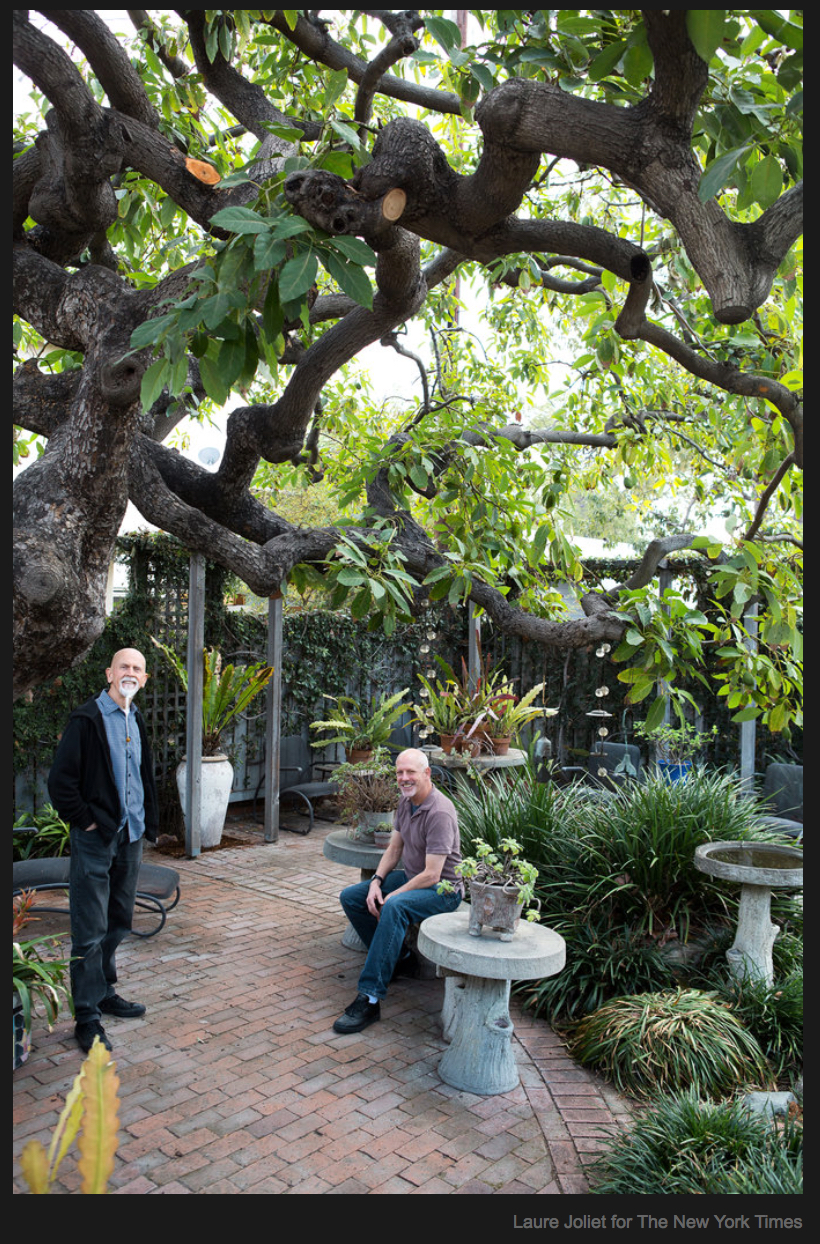
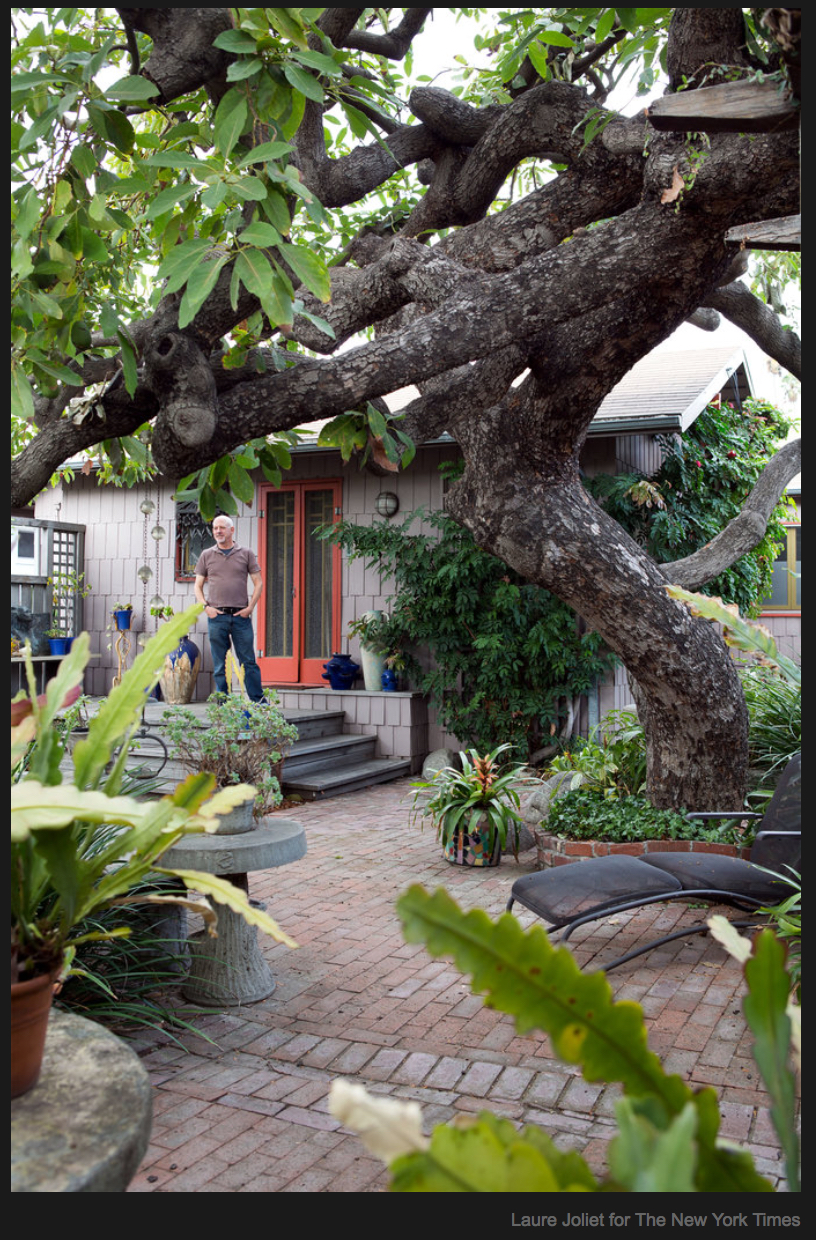

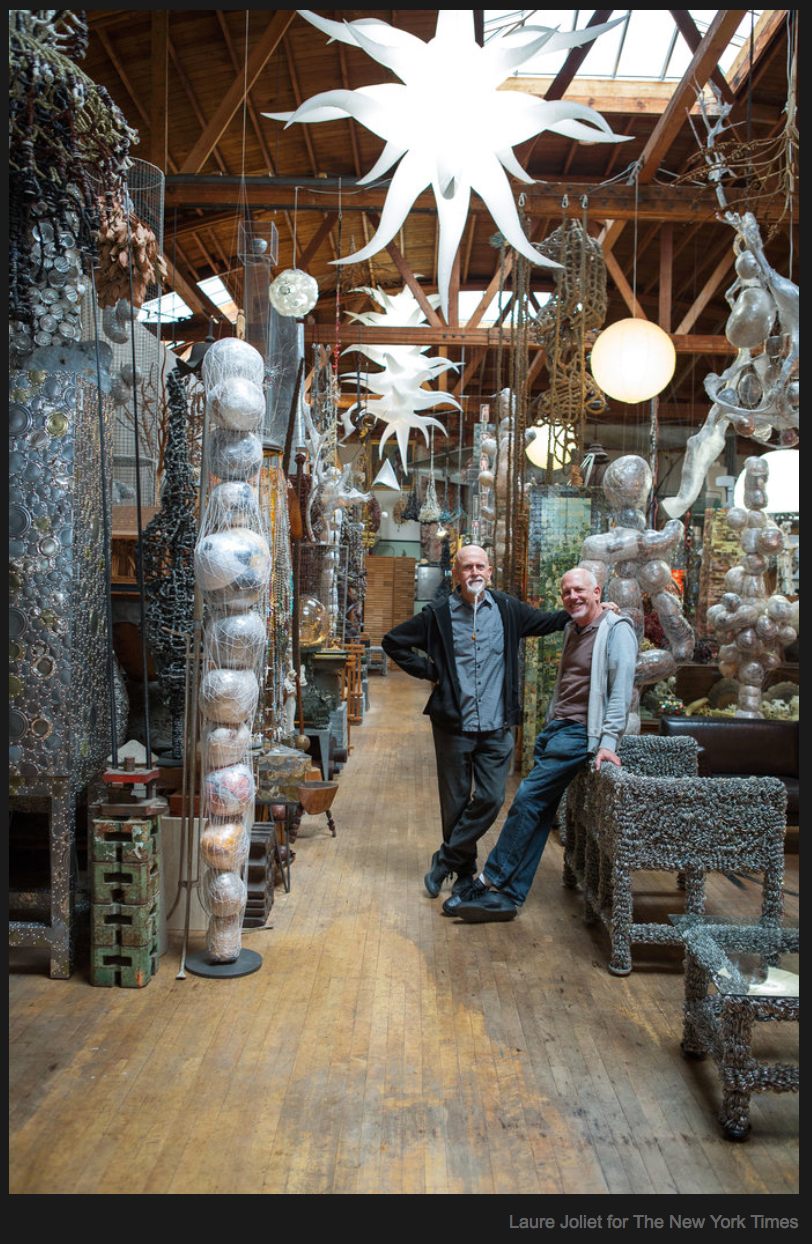

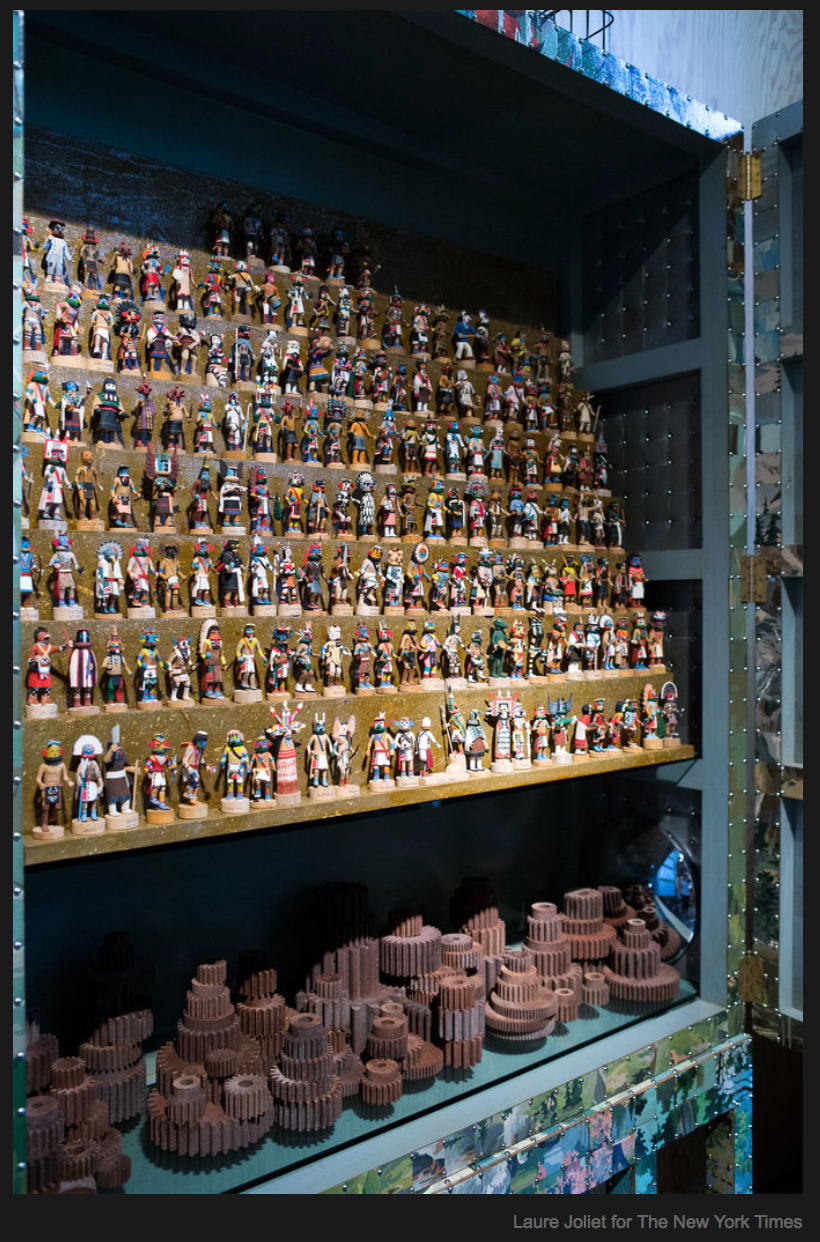
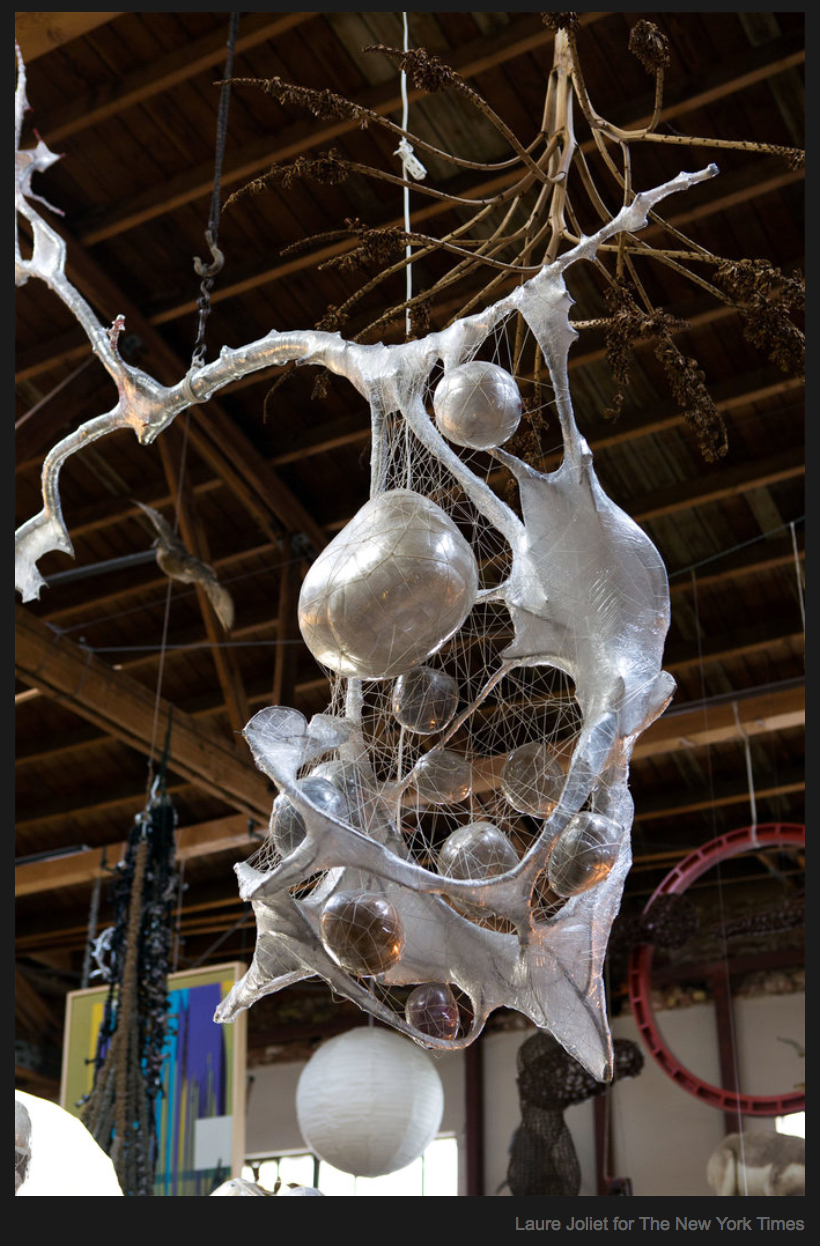
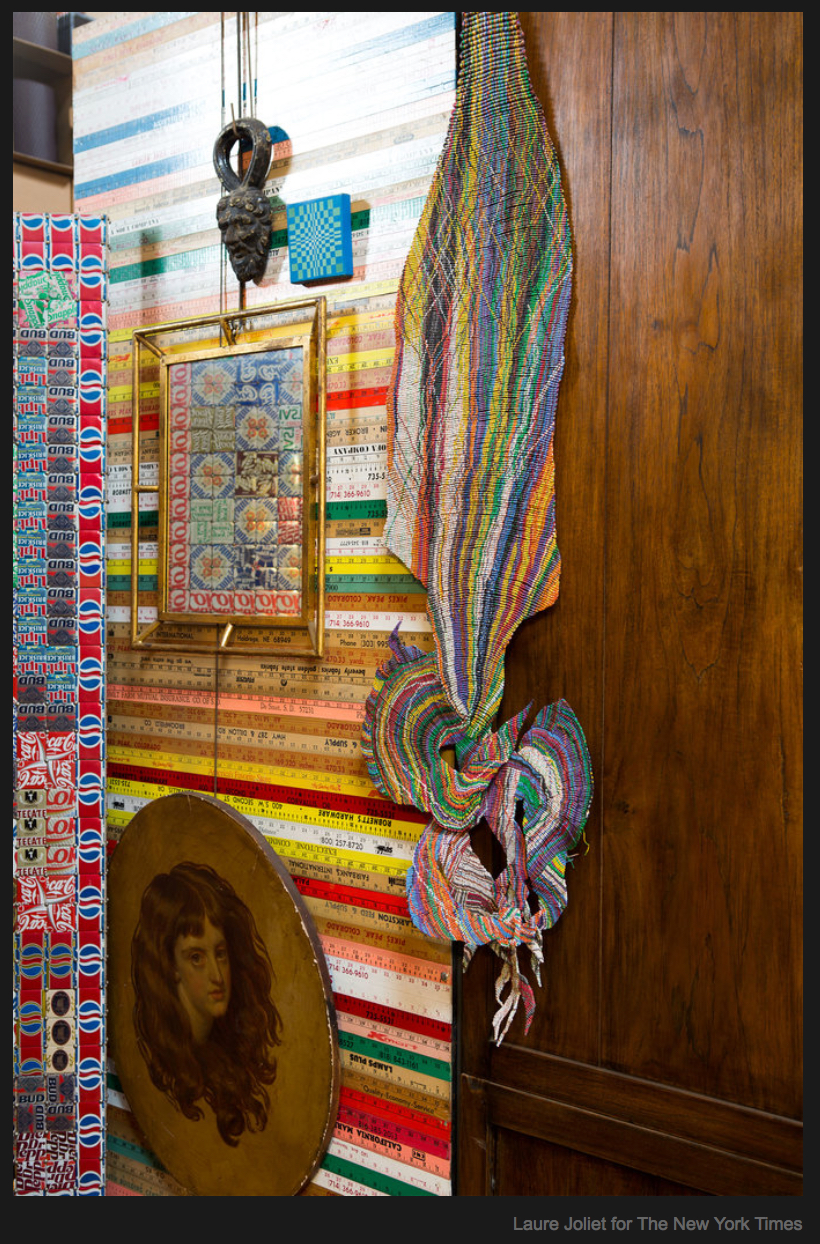
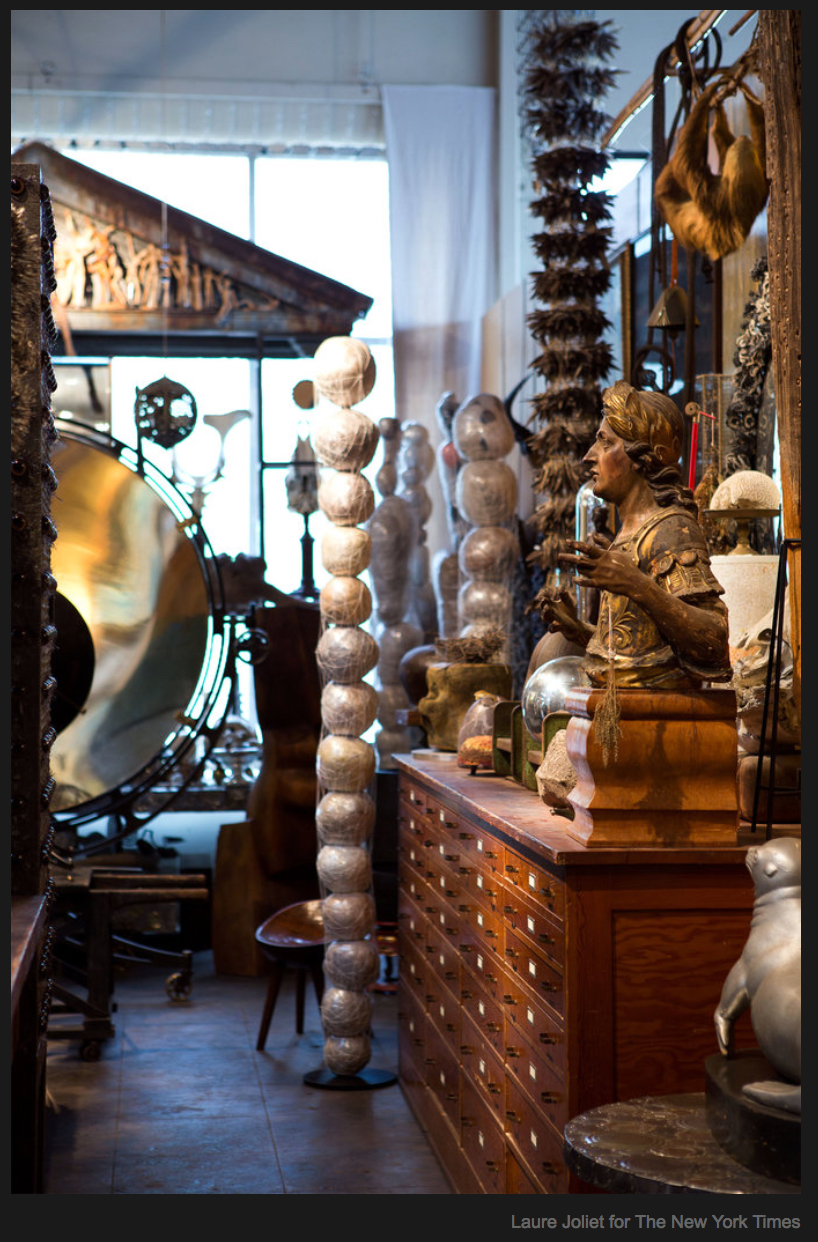
Leave a Reply